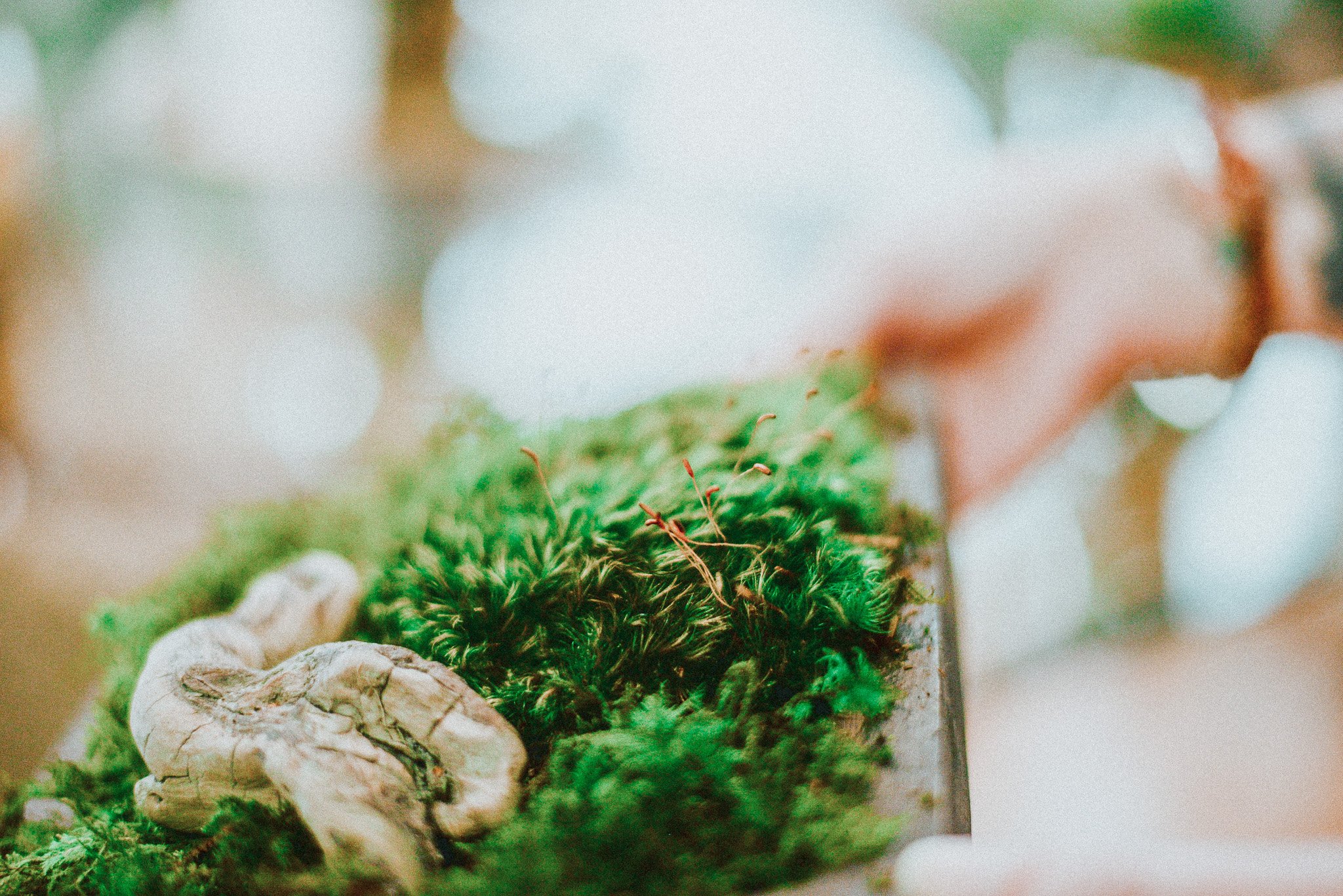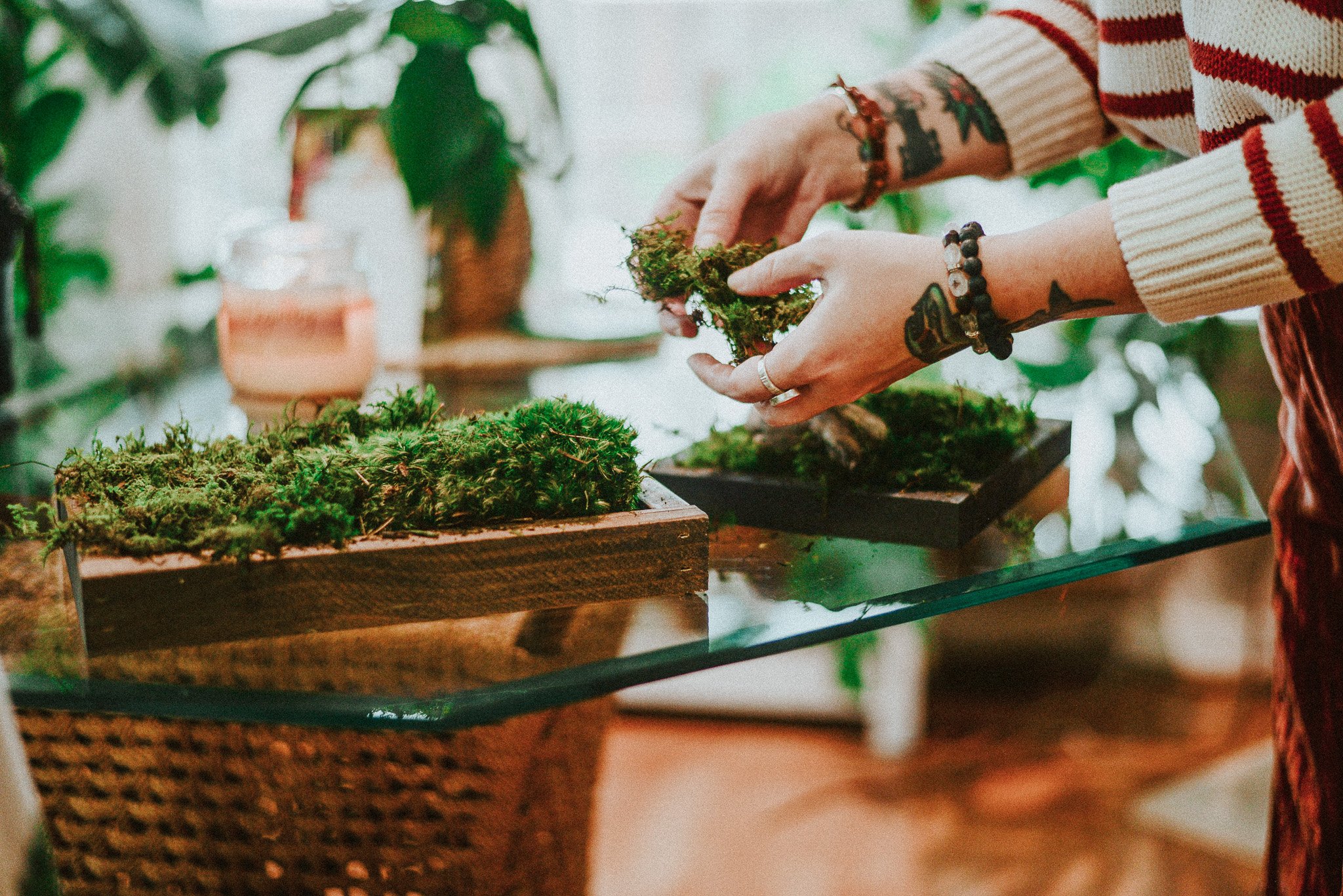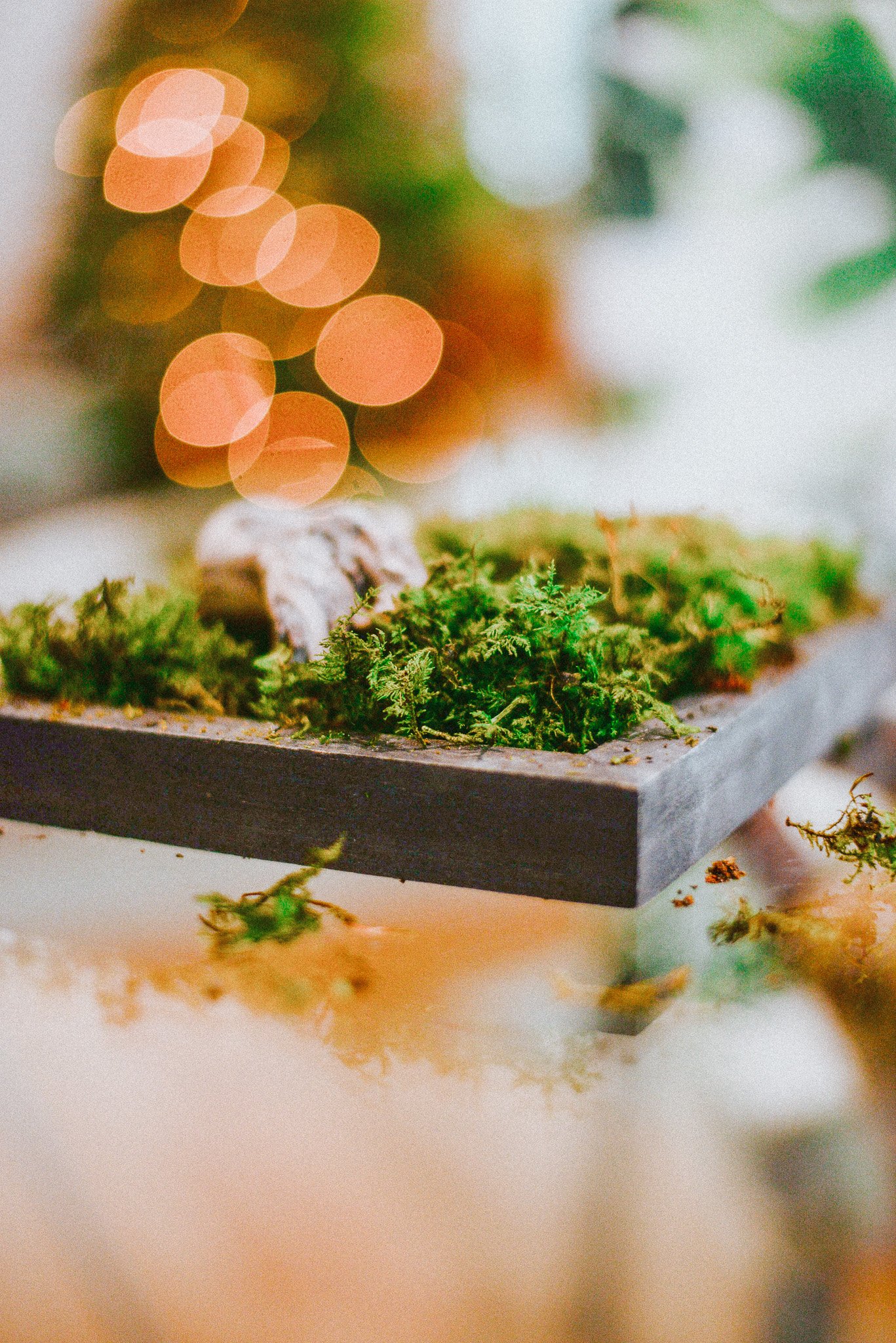Everything You Need To Know About Preserved Moss
Preserved moss care
Preserved moss art is a newly popular decorative art form that incorporates preserved moss into wall art, hanging displays, and even furniture. It’s a low-maintenance option for bringing nature into your home or office.
GENERAL MOSS CARE
WHEN HANGING YOUR ARTWORK
Preserved moss is treated to retain its natural texture and color, but it's still a natural material and can be affected by moisture, direct sunlight and oils on our skin.
AVOID PLACING ARTWORK IN DIRECT SUNLIGHT as this will fade the color over time.
AVOID MISTING, WATERING OR HUMIDITY (i.e. bathrooms) as this will cause the natural fibers to break down.
AVOID EXCESSIVE TOUCHING or handling as the natural oils and dirt on our skin can causes discoloration and damage over time.
On-going care & MAINTENANCE
Avoid treating the moss like a living plant. Remember it has been PRESERVED and can be treated more like artwork than a living thing.
Dust the moss as needed, gently with a soft feather-duster. Avoid using water or cleaning products as this can damage the moss.
If you need to store the art for an extended period of time, keep it in a cool and dry place that is free from direct sunlight and moisture.
FREQUENTLY ASKED QUESTIONS
🦚 WHAT IS PRESERVED MOSS?
Preserved moss is natural REAL MOSS that has been treated with a preservation solution to retain its natural texture and color. Preserved moss is typically harvested from forests or farms and then cleaned and treated with a preservation solution.
🦚 HOW IS MOSS PRESERVED?
The preservation process replaces the natural sap of the moss with a glycerin-based solution (and sometimes natural dyes) that allows it to maintain its appearance without the need for watering or soil. The solution is absorbed by the moss and replaces the moisture content, effectively preserving the moss for long-term use. Moss can last 10+ years when properly cared for.
🦚 IS IT HARVESTED SUSTAINABLY?
I want to raise awareness that unfortunately, a lot of preserved moss we have access to has NOT been harvested sustainably. Especially mosses we use in floral design, houseplant care and gardening. Moss is the most ancient form of plant on the planet, and is absolutely essential to healthy forest ecosystems. Lichen and moss are what turned our rough, rocky planet into the lush abundant earth it is today. Their tiny roots broke down the stones and rock into sediment and soil that allowed for the first plants, and then eventually the first animals! You can learn all about this incredible creation of the earth in the book “Making Eden“. It’s so important we know where our moss comes from, so that precious ecosystems are not destroyed in the process. Mosses that should be avoided as a general rule due to known destruction of their native habitats (unless coming from a reputable sustainable source): peat moss, spanish moss, clubmoss, golden moss, mood moss and sheet moss.
With all that being said, THE MOSS I USE IN MY ARTWORK HAS BEEN DILIGENTLY SOURCED SUSTAINABLY from natural habitats where moss is over-abundant or invasive and farms where it is cultivated for intentional use. This means different moss species are sourced from various places around the world and that the time it takes for farmed moss to grow does significantly increase the cost- but it is absolutely worth it. Many of my suppliers are inaccessible to the general public, but if you need sustainably harvested preserved plant and moss materials in the future I recommend Company Interiors.
🦚 WHAT OTHER SUSTAINABLE PRACTICES ARE INVOLVED IN YOUR WORK?
Sustainability in our current world isn’t a perfect science. It often requires weighing the pros and cons of how materials are harvested, handled, preserved, shipped and beyond. I spend a lot time assessing these conditions with each material used in my moss art, including things like preserved plants, foraged elements and things you may not even consider like: adhesive and framing materials. So here is a general breakdown of the materials I use, where they come from and why I chose them:
Preserved Plants: I source much of my preserved ferns & eucalyptus from the moss company I mentioned above, because I love their commitment to sustainability. I have also preserved my own plant materials using glycerin, however I have not perfected this method and notice the material loses its green coloring and turns to light tan color after a couple years. The materials I source have not lost any pigmentation, and I believe that is due to the natural dyes they use in the preservation process. Other plant materials like amaranth and strawflower have been grown and dried myself due to their natural preservation ability.
Adhesive: This is a BIG ONE considering most available adhesives off-gas VOCs and other harmful chemicals for many years after use. I don’t want to expose my customers and clients to that, so I use a LEED certified eco-friendly tile adhesive that is actually Negative VOC, meaning it actually removes VOCs from the air!
Driftwood: All driftwood used in my pieces has been foraged from beaches where that is allowed and where driftwood is in abundance. Driftwood is one of the less-concerning materials used as it is often abundant and already preserved, but it is worth mentioning.
Wood Mushrooms: All wood mushrooms used in my work are foraged at our local dog park either from trees or on the ground next to trees that have already fallen down. Wood mushrooms typically grow on trees that are dying and help with the breakdown process. That is why I DO NOT harvest from trees that are still standing, and prefer mushrooms that have fallen off a tree that has recently fallen itself. This is actually more common than you might imagine! Especially, in the spring when our park has so many down trees from the weight of the winter snow.
Framing Materials: This is one of my favorite parts- are you ready? All my frames are actually re-claimed home decor signs!! Think “LIVE LAUGH LOVE” and other random signs that often end up at the thrift and could use a second chance at life! I go around and collect these signs and turn them into beautiful artworks! Depending on the sign I have collected, the message may still be present on the back side of the artwork. Check the one you’ve purchased from me to see what it might have said before it became moss art. Framing materials for commercial projects is sourced with intentionality and depends on the season, however many large projects do not require wood framing at all, and can be directly attached to existing materials.
🦚 HOW LONG DOES PRESERVED MOSS LAST?
The lifespan of preserved moss art can vary depending on a few factors, such as the environment it's kept in and the level of care it receives. With proper care, preserved moss art can last for several years or even longer. I like to say it will last for 10+ years because that’s been my personal experience with the materials I use, so far. The strategies around preserving moss having been drastically improving and it is now estimated that some preserved mosses can last 20+ years.
Written by Shii Kaina
Botanist, Horticulturist, Environmentalist and Master Gardener, Shii Kaina, is passionate about blending the lines between indoors and outdoors with sustainable biophilic design and teaching individuals to grow food, while nurturing themselves and the planet.





